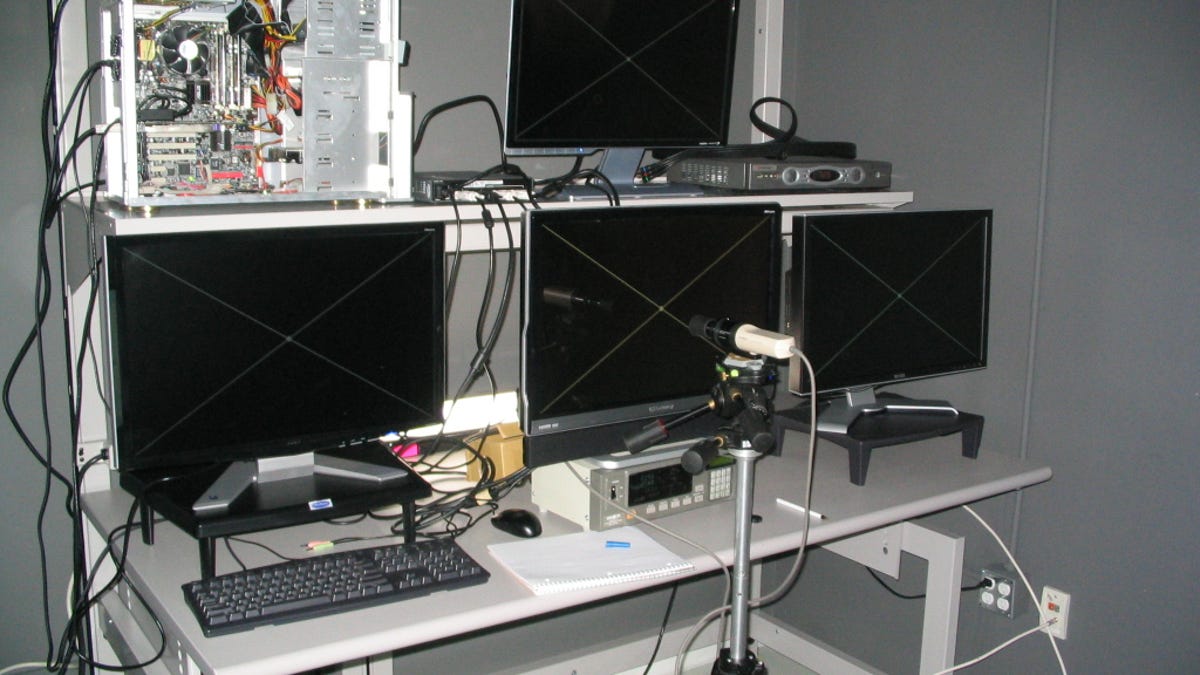Just what's so 'dynamic' about contrast ratio anyway?
We attempt to explain why dynamic contrast ratio isn't a big deal when it comes to purchasing a new computer monitor.

Vendors want to sell you stuff! There, it's finally been said. Don't believe me? Well, you wouldn't be the first, but thankfully, I have evidence.
Within the last year I've seen a new spec, called dynamic contrast ratio (DCR), tossed around for computer displays. If you didn't know before, contrast ratio is simply the difference between the darkest blacks and the brightest whites a given display can produce.
Typically, computer displays have a contrast ratio of about 1000:1. However with DCR, you'll see numbers like 4000:1, 10,000:1, and higher. Basically, it's just a way for Company A to proclaim, "Don't buy Company B's monitor because it has a much lower DCR than our monitor." Since more and more vendors have been pushing this, I want to delve further into how they're getting these numbers. I also covered this topic in less detail (but with a sexy voice thrown in) in episode 2 of the Inside CNET Labs podcast.
Before a monitor is released to the public it goes through a bunch of testing in the vendor's own lab. These tests produce the specs that the vendor will then publish with the release. Specs like maximum brightness, pixel pitch, pixel response time, contrast ratio, and dynamic contrast ratio are all determined in the vendor's own lab.
When testing normal contrast ratio, vendors use a device that measures light to determine how much light is emanating from a display while it's showing both a completely black and a completely white screen. They then take each number, do a bit of math, and come up with the contrast ratio.
Now, aside from a relatively low number of LCDs that use newer LED backlighting technology, all LCDs have a lamp built in to their screens. When you turn your brightness setting down, you're actually just dimming the lamp in the back. When the vendors dim the backlight to get the contrast ratio score, they dim it to a point, but do not turn it off. When they test to get the readings for DCR, however, they turn on the DCR feature and put up a black screen. When the video signal is black or near black, this triggers the backlight to go into standby mode.
Once this is triggered, the darkness of the black level increases by a factor of 10 or more. At this point the vendor takes its reading for the dark screen and compares it with the white screen reading it got before. Since this new dark screen level is so dark, it increases the contrast ratio. The problem is that the screen only gets this dark when the video signal is black or near black--not very useful when you're watching a movie, or playing a game, or doing pretty much anything. The primary reason for including this feature is that the contrast ratio goes from 1000:1 to 10,000:1, and even 20,000:1 for computer displays and even higher for televisions.
When vendors push DCR as a spec for LCDs that use LED backlighting technology, however, it may be more appropriate. Direct contrast ratio works differently here than with lamp-based LCDs. When a portion of an image in a movie is relatively dark, the LEDs in that local area of the screen are dimmed. This occurs on a frame-by-frame basis and lowers the black level in that dark area only. Unfortunately, this implementation has its weaknesses, as well, as there can be some noticeable visual glitches in the areas that darken.
So, after the testing is done, the vendor publishes its super-high number, and Joe Consumer (not you, of course, loyal reader, but someone else) goes into the local Best Buy, looking to get a new monitor for his 5-year-old Compaq desktop that was handed down to him by his younger, more tech-savvy brother. He looks at the specs and sees that monitor A has a 10,000:1 DCR, while monitor B has a contrast ratio of 1000:1. Well, bigger numbers mean better, right? So, he goes for the display with DCR. And that's fine if A does everything else you want it to do.
If a display looks good with the type of content you plan to use on it, has the connections you want, is the right size and price, then by all means get it. Don't get it, however, just because of some spec that means jack when you're actually using the display (or has not been implemented well enough for the glitches not to distract, as is the case with LED-based DCR).

